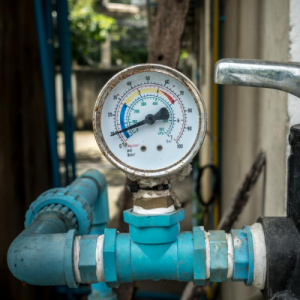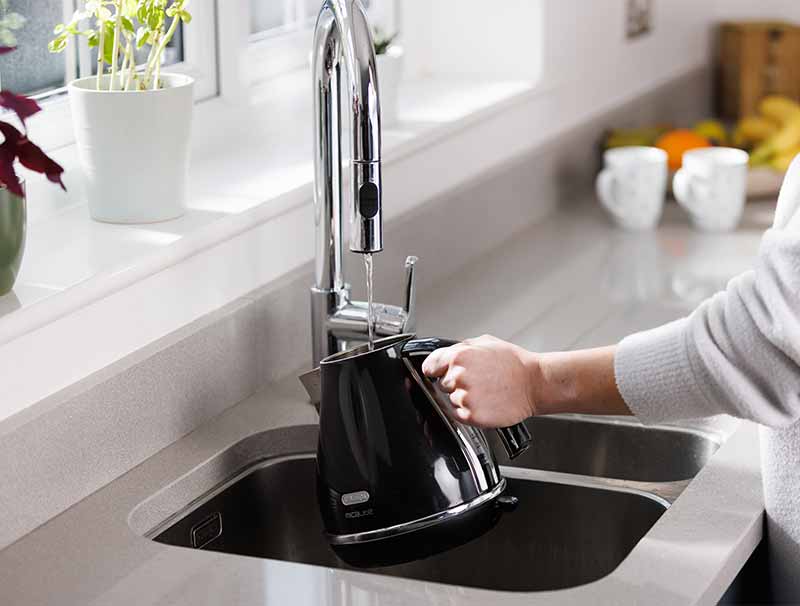My Conclusive Instruction to Addressing Low Water Pressure in Your Home
Click HereWhat are your opinions about 9 Reasons for Low Water Pressure in Your House?

Low water pressure in your home can be an irritating problem, affecting everything from bathing to washing recipes. If you're experiencing weak water circulation, there are several feasible causes and remedies to check out. In this guide, we'll go over common factors for low tide stress and practical actions to address the concern successfully.
Introduction to Low Tide Pressure
Low tide stress takes place when the circulation of water from your taps, showers, and other components is weak than normal. This can make daily jobs more challenging and less effective. Understanding the causes of low tide stress is vital to locating the ideal option.
Usual Causes of Low Tide Stress
Pipe Obstructions
In time, pipes can end up being clogged with mineral deposits, debris, or debris, restricting the circulation of water. This is an usual problem in older homes with galvanized steel pipes.
Corrosion
Corrosion within pipes can result in leakages and decreased water pressure. Corrosion build-up can constrict water flow, specifically in aging plumbing systems.
Faulty Pressure Regulators
Pressure regulatory authorities are responsible for keeping consistent water pressure in your home. If they malfunction, it can result in low water pressure or irregular circulation throughout your house.
Metropolitan Supply Of Water Issues
Occasionally, the issue exists outside your home. Municipal water system problems, such as main line leakages or upkeep job, can temporarily lower water stress in your location.
Exactly How to Identify Low Water Stress
Examining Taps and Components
Begin by checking the water pressure at different taps and fixtures throughout your home. If the concern is isolated to specific areas, it might indicate localized problems.
Evaluating Pipes
Inspect visible pipes for indications of leakages, corrosion, or obstructions. Take note of any kind of uncommon audios, such as knocking or rattling pipes, which might suggest problems within the plumbing system.
Consulting with a Plumber
If you're unable to pinpoint the cause of low tide stress, think about hiring a professional plumber to conduct a detailed examination. They can recognize underlying problems and recommend appropriate solutions.
Do It Yourself Solutions to Repair Low Tide Pressure
Cleaning Up Aerators and Showerheads
Natural resources can collect in aerators and showerheads, reducing water circulation. Remove and clean these elements consistently to improve water pressure.
Flushing Water Heater
Sediment buildup in the hot water heater can restrict circulation and minimize performance. Purging the container regularly helps eliminate debris and maintain optimum efficiency.
Examining Stress Regulator
Guarantee that the stress regulatory authority is operating properly. Changing or replacing the regulatory authority can assist restore proper water stress throughout your home.
Clearing Clogs in Pipes
For small clogs, attempt using a plumbing serpent or chemical drainpipe cleaner to clear blockages in pipelines. Be cautious when utilizing chemicals and follow security standards.
When to Call an Expert Plumber
If DIY efforts fail to solve the problem or if you suspect significant plumbing issues, it's ideal to seek aid from a licensed plumber. They have the competence and tools to resolve complex concerns securely and effectively.
Safety Nets to Keep Water Pressure
Routine Upkeep
Arrange regular maintenance for your plumbing system to avoid concerns such as deterioration, leaks, and blockages. Attending to small troubles early can assist prevent more significant repair work in the future.
Setting Up a Pressure Booster
Think about mounting a pressure booster pump to improve water pressure in areas with continually low circulation. This can be especially advantageous for multi-story homes or buildings with high-demand fixtures.
Surveillance Water Usage
Bear in mind water use habits and avoid overtaxing the plumbing system. Easy modifications, such as astonishing showers and laundry tons, can help maintain ample water stress.
Verdict
Taking care of low water stress can be aggravating, however identifying the underlying causes and implementing proper services can restore optimum flow throughout your home. Whether it's cleaning up aerators, examining pipelines, or seeking advice from a plumber, taking positive steps can make certain a stable supply of water for your everyday demands.
HOW TO FIX LOW WATER PRESSURE IN YOUR HOUSE (EXPERT GUIDE)
The morning shower lacking any real pressure? Bathtub taking hours to fill? Or maybe you’re dissatisfied with the inadequate performance from your combi boiler?
Then you, like millions of others across the UK, might be experiencing low water pressure.
Fortunately, the good news is that you don’t have to continue living this way. The cause of low water pressure in the home is often quite simple, and you may not even require a plumber to fix the problem.
What causes low water pressure in the house?
If you are experiencing issues with water pressure throughout your home, then you may have one of the problems outlined below.
Most of these problems can be fixed quite easily, but for others, you may need to contact a plumber.
Obstructed Shutoff Valve
If you’ve just bought a new home or recently had building work conducted on your property, there is a chance that your water valves were not fully opened.
If the water valve is partially closed, then you may be restricting the amount of water entering your home. To fix this, simply ensure the valve is fully open.
If the valve appears fully open but you are still encountering reduced water pressure, then the valve may be broken. If this is the case, do not under any circumstances try to fix it without proper training.
Often found under your kitchen sink, a water valve will usually look like a bright yellow handle.
Again, if you believe the water valve is broken, contact a plumber immediately.
Leaks in Your Water Pipes
Leaks are the worst-case scenario when it comes to low water pressure.
If the water pipes are damaged, then this will cause low water pressure, as not all the water will make it to your taps.
After you’ve checked to see if the valve is fully open, you can conduct a leak check of your home. Now, this may seem scary, but it is actually quite simple.
Clogged Water Pipes
Clogged water pipes are one of the most common causes of low water pressure.
These clogs usually build-up when your home is supplied water via iron pipes. Iron is particularly vulnerable to rusting which can then break off and cause an obstruction within your system. You also face the problem of things like dirt, gravel or sand entering creating mineral deposits which further block water flowing from the mains water supply.
Unfortunately, if you suspect that clogged pipes may be restricting your water supply, then you will need to contact a plumber.
In this situation, you will either need to have your pipes removed and cleaned or in more severe cases, you could require a new set of water pipes.
Designer Taps
Designer taps look fantastic, but are they built to be efficient in your plumbing system? Modern taps are built for modern homes and they often have lower flow rates that are specifically designed for use within high-pressure systems.
Install a Water Pressure Booster Pump
If the issue is simply that the mains water pressure supply is too low, the simplest fix is to invest in a booster pump. Found in homes of all shapes and sizes, booster pumps are a relatively cheap option to add extra pressure to your home.
Designed to increase water pressure by passing water into the pump from your mains supply and then ejecting it into your home water system at a higher pressure, a booster pump is a truly simple and effective solution to increasing water pressure.
https://www.anchorpumps.com/blog/the-plumbers-guide-to-fixing-low-water-pressure/

HOW TO FIX LOW WATER PRESSURE IN YOUR HOUSE (EXPERT GUIDE)
The morning shower lacking any real pressure? Bathtub taking hours to fill? Or maybe you’re dissatisfied with the inadequate performance from your combi boiler?
Then you, like millions of others across the UK, might be experiencing low water pressure.
Fortunately, the good news is that you don’t have to continue living this way. The cause of low water pressure in the home is often quite simple, and you may not even require a plumber to fix the problem.
What causes low water pressure in the house?
If you are experiencing issues with water pressure throughout your home, then you may have one of the problems outlined below.
Most of these problems can be fixed quite easily, but for others, you may need to contact a plumber.
Obstructed Shutoff Valve
If you’ve just bought a new home or recently had building work conducted on your property, there is a chance that your water valves were not fully opened.
If the water valve is partially closed, then you may be restricting the amount of water entering your home. To fix this, simply ensure the valve is fully open.
If the valve appears fully open but you are still encountering reduced water pressure, then the valve may be broken. If this is the case, do not under any circumstances try to fix it without proper training.
Often found under your kitchen sink, a water valve will usually look like a bright yellow handle.
Again, if you believe the water valve is broken, contact a plumber immediately.
Leaks in Your Water Pipes
Leaks are the worst-case scenario when it comes to low water pressure.
If the water pipes are damaged, then this will cause low water pressure, as not all the water will make it to your taps.
After you’ve checked to see if the valve is fully open, you can conduct a leak check of your home. Now, this may seem scary, but it is actually quite simple.
Clogged Water Pipes
Clogged water pipes are one of the most common causes of low water pressure.
These clogs usually build-up when your home is supplied water via iron pipes. Iron is particularly vulnerable to rusting which can then break off and cause an obstruction within your system. You also face the problem of things like dirt, gravel or sand entering creating mineral deposits which further block water flowing from the mains water supply.
Unfortunately, if you suspect that clogged pipes may be restricting your water supply, then you will need to contact a plumber.
In this situation, you will either need to have your pipes removed and cleaned or in more severe cases, you could require a new set of water pipes.
Designer Taps
Designer taps look fantastic, but are they built to be efficient in your plumbing system? Modern taps are built for modern homes and they often have lower flow rates that are specifically designed for use within high-pressure systems.
Install a Water Pressure Booster Pump
If the issue is simply that the mains water pressure supply is too low, the simplest fix is to invest in a booster pump. Found in homes of all shapes and sizes, booster pumps are a relatively cheap option to add extra pressure to your home.
Designed to increase water pressure by passing water into the pump from your mains supply and then ejecting it into your home water system at a higher pressure, a booster pump is a truly simple and effective solution to increasing water pressure.
https://www.anchorpumps.com/blog/the-plumbers-guide-to-fixing-low-water-pressure/
Do you like reading about ? Put feedback directly below. We will be glad to see your thoughts about this blog. We are looking forward to see you back again in the future. Sharing is caring. You won't know, you could be doing someone a favor. I enjoy reading our article about Low Water Pressure in the House?.
Book With Us Today!